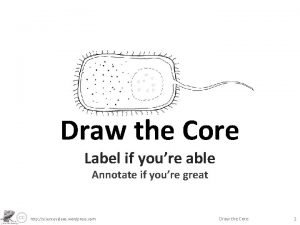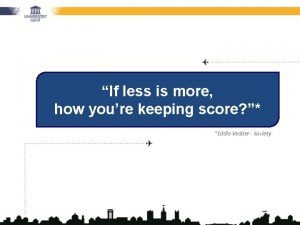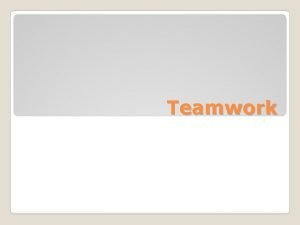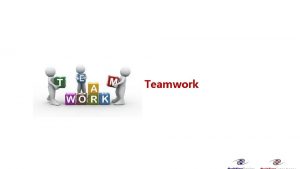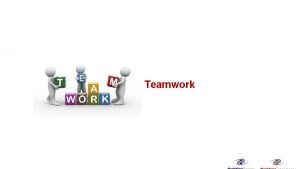Teamwork Teamwork When youre part of a team










- Slides: 10

Teamwork

Teamwork “When you're part of a team, you stand up for your teammates. Your loyalty is to them. You protect them through good and bad, because they'd do the same for you. ” - Yogi Berra

What Is a Team? • A team is a collection of individuals, each with his/her own expertise, brought together to benefit a common goal • Teams are often comprised of people who do not know each other and who must work hard to develop productive working relationships despite personal differences and cultural practices

Benefits of a Team • • Shared workloads and responsibility Broader diversity in knowledge and skill More productive brainstorming Chances for leadership and personal satisfaction • Sense of belonging to a successful process • Ability to accomplish more than if work is done independently

Developing a Team • Step #1: Team members identify the team’s mission – What does the team have to do? – How will the team accomplish the task? – What information is needed? – What resources are available?

The Team’s Mission g i s e D B n f e ri

Developing a Team • Step #2: Team members establish group norms – Develop guidelines, protocols, or rules – Establish norms as a team through consensus – Regulate proper and acceptable behavior by and between team members – Commit to follow these rules “No design decision will be acted on before discussion with and consensus from all the team members. ”

Establishing Group Norms • Create a list of norms by brainstorming with teammates • Analyze each norm and discuss its impact on the team and the overall goal • Identify key norms that everyone can come to consensus on • Establish consequences if norms are broken

Typical Group Norms • Input from all team members • Team meeting schedule and project timeline • Communication protocols • Conflict resolution protocols • Note: A copy of the established norms must be provided to each team member

Developing a Team • Step #3: Identify team members’ strengths and weaknesses – Team members list individual talents, skills, and limitations – Team members identify job responsibilities – Each team member’s strengths are a support mechanism for the other team member’s/members’ weaknesses



